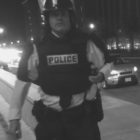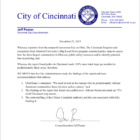-
‘You Ain’t No Big Man’: Videos Show Disparities in Cleveland Police Response to Kids in Crisis
This story is a joint project of the nonprofit The Marshall Project – Cleveland and Eye on Ohio, the nonprofit, nonpartisan Ohio Center for Journalism. Please join the free mailing lists for Eye on Ohio or The Marshall Project, as this helps provide more public service reporting. By Cid Standifer An ambulance was already outside…
-
‘The gun’s in his hand’: Columbus Police sued after homicide victim left alone with her abuser
How often are domestic abusers arrested in Ohio? We still don’t know. This article provided by Eye on Ohio, the nonprofit, nonpartisan Ohio Center for Journalism. Please join their free mailing list as this helps provide more public service reporting. By Clare Amari Part I: The End The call is not, at the outset, different…
-
Does freedom of the press extend to covering police?
Almost a year later police still won’t identify officer who attacked journalists; Reporters say they mostly work without incident but face an increase in online threats This article provided by Eye on Ohio, the nonprofit, nonpartisan Ohio Center for Journalism in partnership with the nonprofit Matter News. Please join Eye on Ohio’s free mailing list…
-
Cincinnati Councilmember Introduces Motion to Study Racial Disparity in Traffic Stops in Response to Eye on Ohio/Enquirer Story
On Friday, Cincinnati City Councilmember Jeff Pastor introduced a motion to examine police practices after an investigation by the Ohio Center for Investigative Journalism, the Cincinnati Enquirer, and Stanford University’s Big Local News program found that blacks and black neighborhoods were more likely to be traffic stop targets. Read the full story on the Cincinnati…
-
Investigation: Blacks, black neighborhoods most likely to be traffic stop targets in Ohio’s 3 biggest cities
Investigation: Blacks, black neighborhoods most likely to be traffic stop targets in Ohio’s 3 biggest cities By Max Londberg and Lucia Walinchus Video by Michael Nyerges Reporters from the nonprofit newsroom Eye on Ohio, The Cincinnati Enquirer and researchers from Stanford University’s Big Local News program examined police stops to assess how the three largest…
-
Sidebar: Beleaguered Cincinnati agency probing stop complaints rarely faults cops
Reporters from the nonprofit newsroom Eye on Ohio, The Cincinnati Enquirer and researchers from Stanford University’s Big Local News program examined police stops to assess how the three largest communities in Ohio use public safety resources and to identify possible bias in policing. By Max Londberg Cincinnati, like all cities, has an imperfect policing record. …






